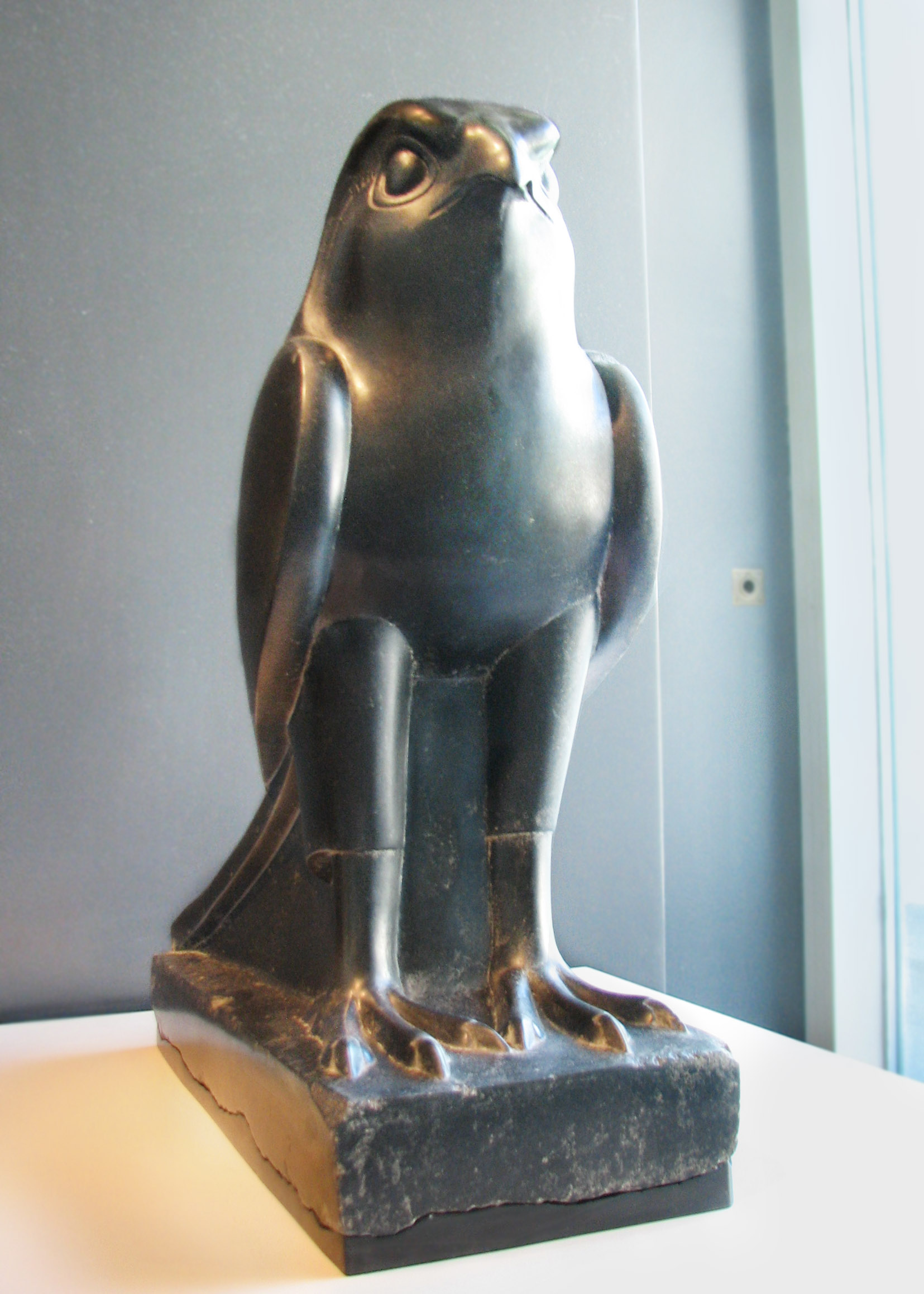
Ptolemaic period, late 4th century-3rd century BCE
Basalt (Stone), 42.2 x 18.4 x 44.5 cm (16 5/8 x 7 1/4 x 17 1/2 in.)
Gift of the Alsdorf Foundation, Art Institute of Chicago #2002.632
Photo © Joan Ann Lansberry
|
The placement of this piece by a museum window allowed a strong contrast of light and shadow which really brings out its form visually. It's an apt placement for the deity whose emblem is his vision. The falcon's vision became a symbol for the pharoah as he needed good long distance vision as he ruled his kingdom. Thoth, who healed the gods Set and Horus after their battle, presents Horus with his eye:
 Ape of Thoth, sitting holding sacred eye in front of chest Oriental Institute Museum 10658 Photo © Joan Ann Lansberry "The ancient Egyptians believed their pharoah was the earthly incarnation of the great sky god Horus, who is depicted either as a falcon-headed man or the bird itself, a symbol of speed, power, and hunting prowess. Although the veneration of Horus as the symbol of the king is attested from the beginning of the Dynastic Period (c. 3100 BCE), the cult of the Horus-king gained unprecedented prominence during the Ptolemaic Period." Raneb's stela of the 2nd Dynasty shows the two elements of the king's Horus name, Ra-neb, carved within the serekh or palace fašade, which is surmounted by the god Horus as a falcon:
  
|